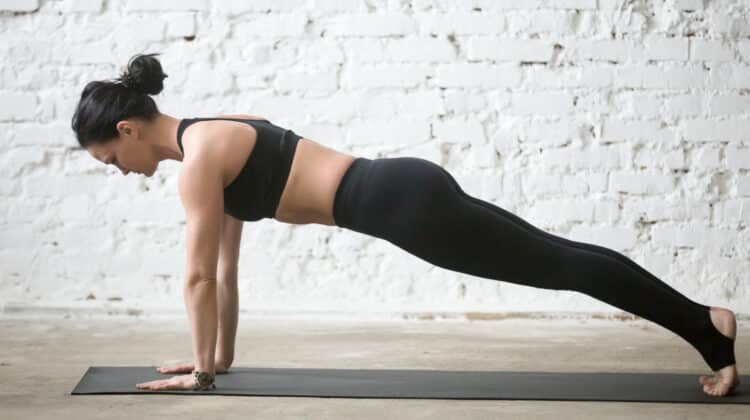
Interested in improving your core strength but concerned that you don’t have enough time? You are not alone if you are unsure which Plank exercises will be the most beneficial. All you have to do is take out 5 minutes for the best Plank Workout.
You may overlook your core muscles entirely since you’re confused about how to exercise or how much time you should devote to working out. However, specific core workouts that involve plank movements can aid in the development of strength and balance in the lower body.
Planks are one of the most popular exercises recommended by trainers to strengthen the core, and for good purpose. The classic core-stabilizing technique is deceptively simple, but it is incredibly effective.
Apart from that, the plank is generally considered highly safe for most persons suffering from low-back discomfort, unlike specific other core workouts that entail bending, flexing, or twisting actions.
On the other hand, a plank does more than work your core. A qualified personal trainer in New York City, says “the plank is one of the best exercises for core development because it also strengthens your glutes and hamstrings, maintains appropriate posture, and enhances balance.
The use of planks can make a significant difference in your daily life, particularly if you have a desk job or spend most of your time sitting. Another advantage of the inconspicuous plank is that it is pretty durable, and one can be done anywhere, and there is no need to go to the gym.
Why should we focus on Plank Workout?
The main and important reason to focus on plank workouts is for building better core strength.
Exercises that help you build a strong core will make your workouts more enjoyable. It will complete your exercise regimen and assist you in maintaining proper form during each movement you perform. Some basic core exercises, such as crunches and bridges, may be familiar to you.
Plank exercises are among the core’s most valuable and positive result-worthy workouts. Planks have been shown to create excellent core muscle activation in studies, which supports planks for both athletes and non-athletes who want to get in shape.
Benefits Of Healthy And Strong Core
- Performing a consistent and effective core workout has a number of advantages, including the following:
- A spinal column that has been stable
- Increased range of motion
- Proper alignment and posture.
- Enhanced balance
Without regular exercise, the core can become weakened, which raises the chance of developing conditions such as those listed below-
- The lumbar spine’s posterior joints are compressed, causing pain.
- The pelvis leans excessively to the anterior or posterior.
- Having a bad posture
- Back pain or soreness in the lower back
- Tightness and strain in the muscles
Steps For Doing Plank Workout
The following instruction is provided to ensure proper form: “Keep your buttocks aligned with your shoulders.” To assist you in getting your butt in the appropriate posture, go into a plank position and raise your butt in the air. Afterward, tuck your buttocks beneath and tighten your abs while engaging your glutes. Maintain a firm grip on your abdomen and buttocks throughout the exercise.
The 5-minute plank workout that follows provides a simple and efficient training regimen that includes a variety of planks to help you improve your core daily—all in under five minutes, warm-up your muscles before you begin. You may go for a quick 1 to 2-minute walk or jog, followed by some mild stretches, to get your heart rate up.
Perform every one of the plank workouts listed below twice in a row to complete the entire five-minute time limit.
These are 6 types of plank exercises.
1. The Basic High Plank Workout
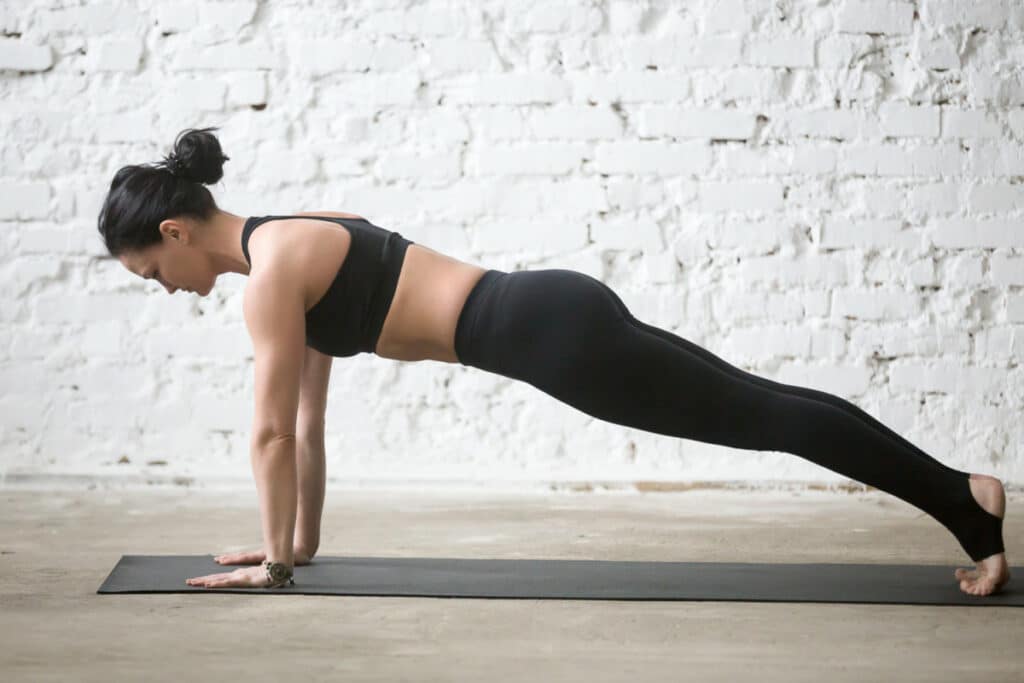
- With your arms spread a little wider than shoulder-width apart on the floor, start in a push-up position. You should put your hands under your shoulders, so they are level with your body.
- Keep your arms straight and your toes tucked under.
- Keep your core tight and your body straight from the head to the toe. Don’t sag at the hips or dip your head.
- Breathe through this exercise for 30 seconds, then do it over again.
The recommended amount of exercise time doesn’t matter if it takes you a long time to get to it. Progress, not perfection, is the goal.
2. Reverse Plank
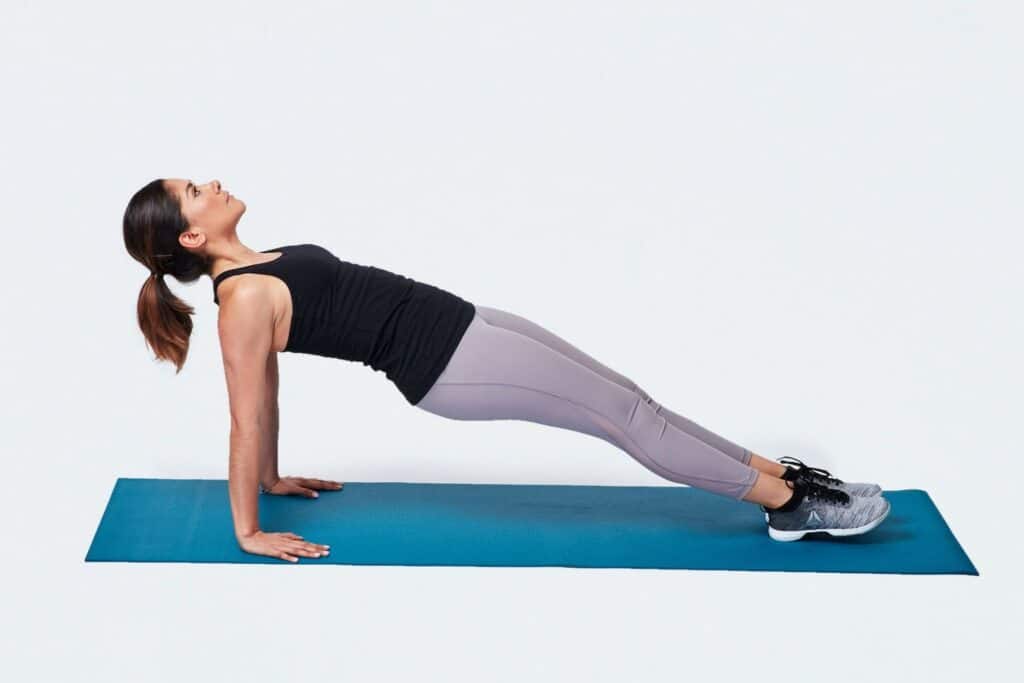
- Sit down on an exercise mat with your legs out in front of you, and keep your back straight.
- Your palms should be spread wide on the floor behind you. They should be outside of your hips.
- To press into your palms, move both of your hips up toward the ceiling and your upper body toward the sky.
- Point your toes at the ceiling, keep your arms and legs straight, and lookup.
- Keep your whole body moving to make a straight line from your head to your toes.
- Make sure your core is tight and that you focus on pulling your belly button back toward your spine.
- For 30 seconds, stay in this way.
Also Read: Best Abs Exercises
3. Shoulder Tap Plank
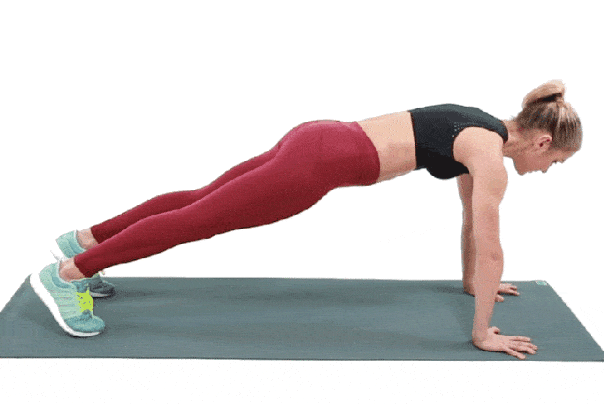
- Start by the basic high plank as mentioned above, your feet should be about hip-width apart.
- To keep your hips from moving, tap your right hand to your left shoulder while keeping your core and glutes strong.
- Then, put your left hand on your right shoulder. That’s one.
- Alternate your sides 20 more times.
4. Hip Dip Plank
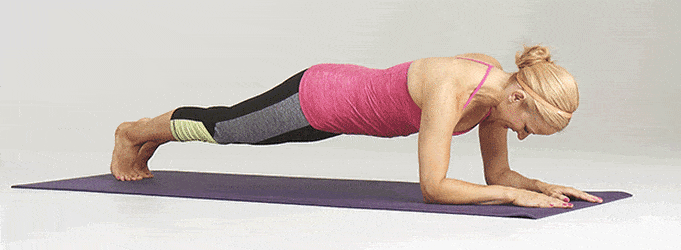
- You can get into a forearm plank from a high plank by lowering your forearms down to the ground. As you move, your elbows should be stacked under your shoulders.
- Keep your core and butt tight, and keep your hips up.
- Tap the floor with your hips to the left. Repeat on the right. That’s one.
- Alternate your sides 20 more times.
5. Up-Down Plank Workout
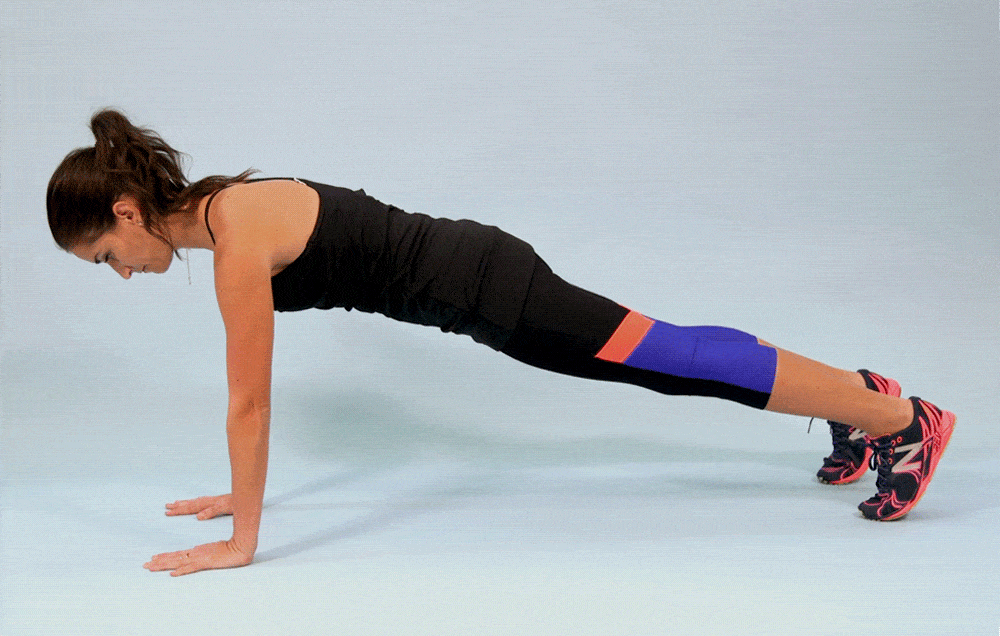
- When you’re in a high plank, your feet should be about hip-width apart.
- Make sure your forearm is on the ground by lowering your left arm down so that it is on the ground. Then, perform the exact step on your right. You should know how to do a forearm plank.
- The next step is to put your left hand back on the floor to extend your arm. Do the same with your right arm, so that you end up back in a high plank. That’s one.
- Make sure your hips stay still as you move so they don’t swing to the side.
- Do 20 up and down plank push-ups.
6. Pyramid Plank

- Make sure your forearms are on a mat when you start. Make sure you keep your core tight as you start to push up with your hips.
- Your forearms should stay on the ground as you slowly press both your heels down to the floor (think of an upside-down “V” shape). Make sure your hamstrings aren’t so tight that you can bend your knees a little bit.
- Stay in the position for a short time, and then lower your hips so that you can get back into the plank position again.
- Using your hands, push yourself up onto them and move your body into a Downward Dog yoga position (with your hips raised again toward the ceiling). Tighten your core and strengthen your back straight.
- Stretch your heels and chest toward the ground at the same time.
- Return to the plank position on your forearms in a slow and steady way.
- Repeat for 30 seconds.
Note -To avoid any mishappening or injury, Do Not try if you do not understand or feel comfortable doing any planks. As planks require the proper alignment and needed amount of stress to be given to your muscles.

Leave a Reply
You must be logged in to post a comment.